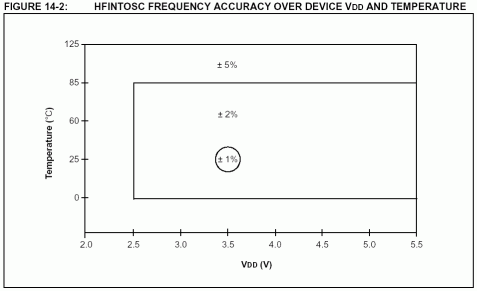max0412
Full Member level 5
Does anyone know whether the +/-1% spec for the internal OSC on PIC’s is over the full temperature range or is this spec referring to component to component variations. I’ve looked through the datasheets expecting to find a graph of drift vs temperature but there isn’t one?
The reason I ask is that the closest I can get to 38 kHz IR carrier with a PIC10F200T and external 1.8432MHz external crystal is 38.4kHz.This is similar to the quoted +/-1% spec for the internal OSC. This is still within the 95 percentile of the PNA4602 detectors pass band.
In a nutshell what I’m asking is it worth a buck to use an external crystal in this case or should I save a buck and just rely on the internal RC OSC? Particularly when I’m assuming that each PNA4602 will also vary over temp and component to component.
The reason I ask is that the closest I can get to 38 kHz IR carrier with a PIC10F200T and external 1.8432MHz external crystal is 38.4kHz.This is similar to the quoted +/-1% spec for the internal OSC. This is still within the 95 percentile of the PNA4602 detectors pass band.
In a nutshell what I’m asking is it worth a buck to use an external crystal in this case or should I save a buck and just rely on the internal RC OSC? Particularly when I’m assuming that each PNA4602 will also vary over temp and component to component.
